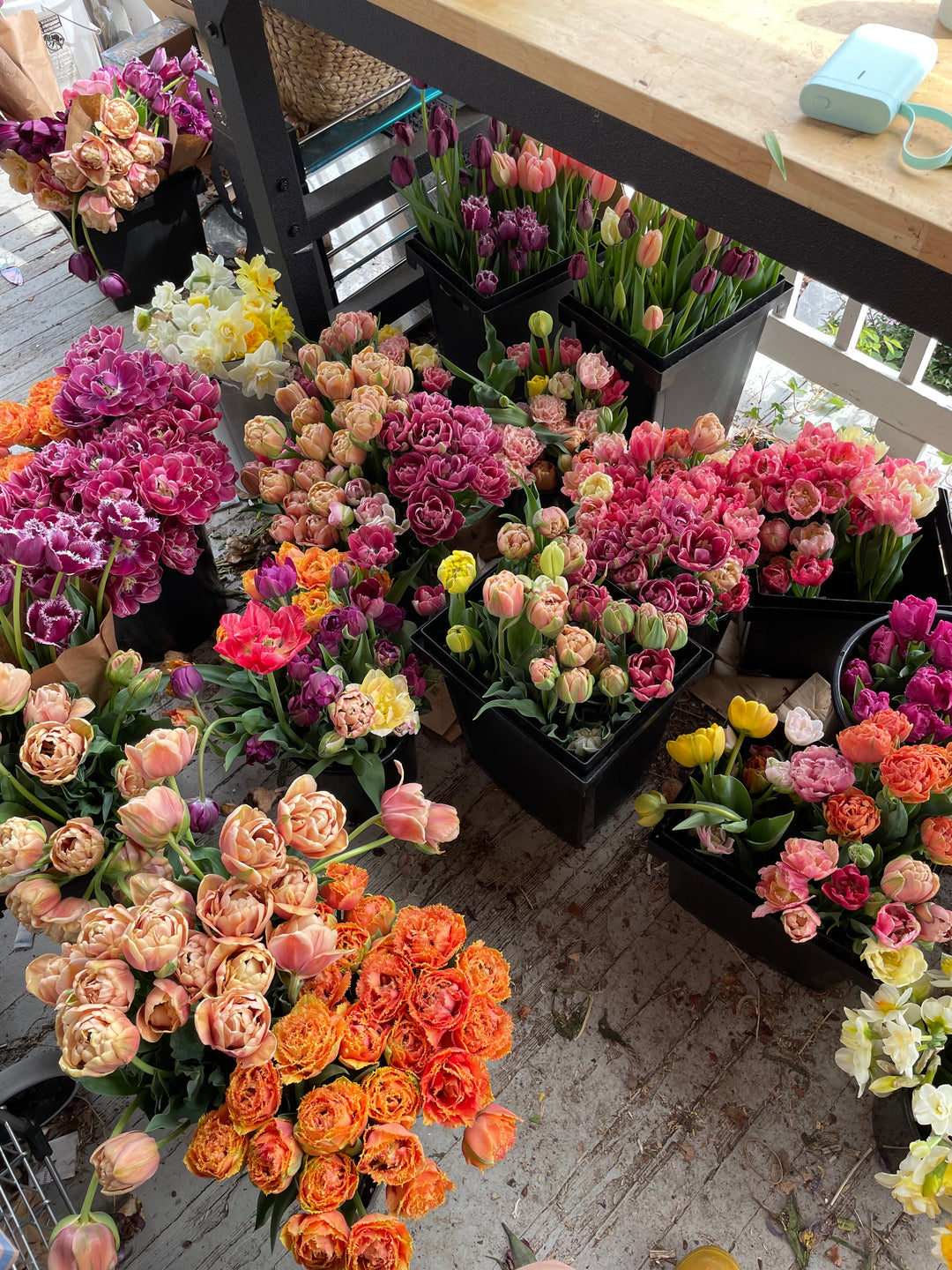Discover What Makes Butterfly Ranunculus Blooms Unique!
The Short Answer... Everything!
"The first time I tried Ranunculus I planted 10 in July doing nothing and 2 came up the next spring. Shove ‘em two inches deep in good soil in spring or fall and you will have some success. Ranunculus are expensive. The more prep you do with these the more you will be rewarded". - Mary
Not your typical Ranunculus bloom

There are enough Ranunculus varieties for each day of the week, and we love them all! In the HHF garden we grow Butterfly™, Amandine, La Belle, Elegance, Romance, and Success Cloni, and Clone varieties. But Butterfly... she's extra special!
Just take a look at one of our best sellers, Ariadne. She has a glittery sheen to her petals that can only truly be appreciated in person!
All Ranunculus are part of the buttercup family. The Butterfly™ variety comes from the Japanese breeder, AYA ENGEI Co., Ltd. They are extremely unique and hard to find.
HHF Tip: Remember when we said that they appear to glitter? That's due to their natural wax coating, which glows in the sunshine.
What to Expect
Planting
 All Ranunculus begin with a dehydrated, dormant, corm. Butterfly™ Ranunculus corms are HUGE in comparison to other varieties, but they can all be started in the same way.
All Ranunculus begin with a dehydrated, dormant, corm. Butterfly™ Ranunculus corms are HUGE in comparison to other varieties, but they can all be started in the same way.
A Large Bowl
Water
Potting Mix
Seed Starter Mix
Succulent Potting Mix or Coconut Coir (our favorite)
Large Cell Starter Pots (we like 3.125 square biodegradable starter pots, or bulb crates for larger planting)
Optional: Humidity dome with vent, soil thermometer, and room temperature thermometer
- Prepping your Corms
-
Soak your Corms - Fill your container with room temperature water

and place under a faucet with a slow drip for 3-4 hours. The drip keeps oxygen moving in the water. Corms will double in size and become pliable. - Drain and rinse off soaked corms and set on a paper towel.
- Pre-Sprouting - Fill your starter pots halfway with damp planting mix. Place corms on top, with "legs" pointing downwards. Cover with an inch of planting mix. OPTIONAL: Cover with humidity dome.
- Place in a Cool dark area (between 55-64 degrees Fahrenheit, no warmer, 70 will trigger dormancy).
-
 DO NOT WATER unless soil is completely dry.
DO NOT WATER unless soil is completely dry. - In 7-14 days corms will begin to sprout root hairs and green growth. At this time move your sprouted corms to a sunny spot in a cool garage or basement. Grow lights are helpful, but not necessary.
- Keep inside until outside temperature is warm enough for transplanting, watering when soil is dry 1" below the surface.
- Transplanting Outside
- Ranunculus LOVE sunshine. Plant in well draining soil, 8" apart.
 Plant into soil that is 45-55 degrees (This happens when the average daytime temperature is 50 degrees Fahrenheit). Avoid temperatures below 25.
Plant into soil that is 45-55 degrees (This happens when the average daytime temperature is 50 degrees Fahrenheit). Avoid temperatures below 25.
- Unsprouted corms should be planted 2" deep.
- Water deeply once a week after the green growth starts ramping up. Blooms appear about 90 days after sprouting.
- Bloom for Longer
- As with all flowers, the more you cut, the more you get. If you allow blooms to die on the plant, the plant will go into dormancy. If you cut blooms to enjoy, the plant will continue growing until temperatures get too hot.
- Ranunculus typically begin to slow down once daytime temperatures pass 70 degrees. To combat this we drape shade cloth above our plants, to prolong the plants life.
- Pests
- Aphids and powdery mildew are the biggest threat to your Ranunculus, pest-wise. Treat with horticultural Neem Oil according to manufacturer instructions to prevent your plants from getting buggy and sick.




Leave a comment